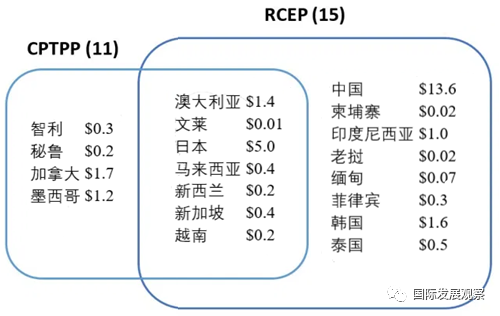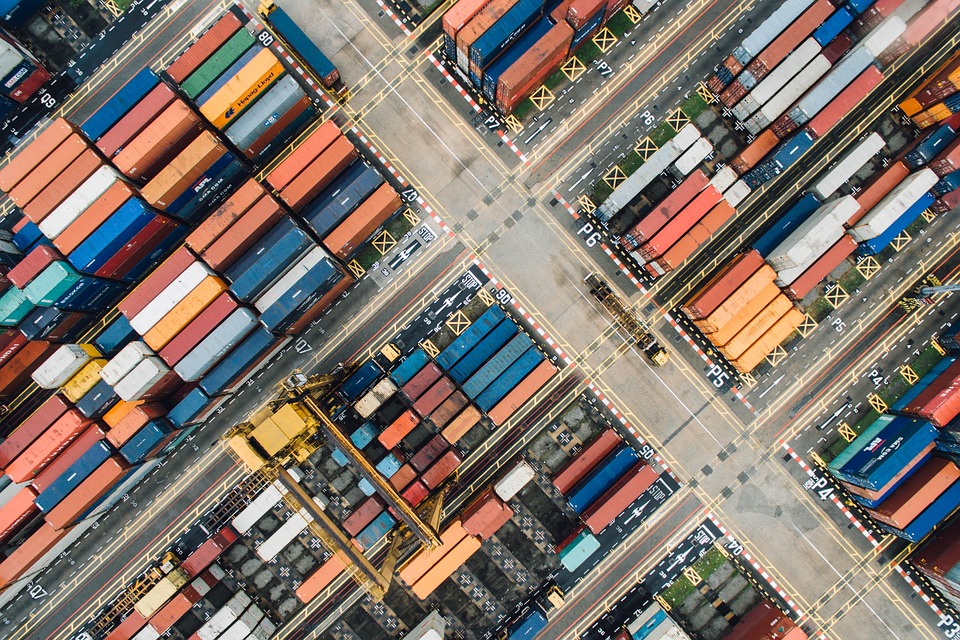After China joined RCEP, it announced that it was considering joining CPTPP. What are the similarities or differences between the two agreements? What opportunities will it bring to China?
Total words2098About6minutes
Author: Julia Sun
In November 2020, China, Japan, South Korea, Australia, New Zealand and ten ASEAN countries signed the Regional Comprehensive Economic Partnership (RCEP). Five days later, President Xi Jinping told the APEC leaders' meeting that China would actively consider joining the Comprehensive and Progressive Agreement for Trans-Pacific Partnership (CPTPP).
What is RCEP "group"?
RCEP is a trade agreement among 15 countries in the Asia-Pacific region. It was initiated by ASEAN in 2012 and reached after 8 years and 31 rounds of negotiations. RCEP covers 15 member countries, nearly one-third of the world's population, 25% of global trade, and a global economic aggregate of 29%. It is the largest free trade agreement in the world.
RCEP includes market access principles such as trade in goods, trade in services, and investment, as well as a large number of rules such as trade facilitation, intellectual property rights, e-commerce, competition policy, and government procurement. Middle economies have formulated special regulations such as the transition period.
The RCEP agreement must be ratified by at least six ASEAN countries and three non-ASEAN countries to take effect. Currently, the RCEP agreement has been ratified in Singapore, China, Thailand and Japan. If successfully passed in other member states, RCEP is expected to come into effect on January 1, 2022.
What opportunities will RCEP bring?
RCEP will boost regional trade and economic growth. After RCEP takes effect, market access, rules of origin, customs procedures, inspection and quarantine, and technical standards among member countries will be further relaxed, and technical standards will be gradually unified, thereby reducing regional trade, service and investment costs, and stimulating trade and economic growth. It is estimated that by 2030, RCEP will drive US$500 billion in trade and US$209 billion in economic growth every year, and the specific benefits will vary from country to country. China, Japan, and South Korea have become the biggest winners of RCEP, and the benefits are expected to reach US$85 billion, US$48 billion, and US$23 billion respectively. Indonesia, Malaysia, Thailand and Vietnam will also benefit greatly from RCEP.
RCEP will expand China's economic influence in the Asia-Pacific region and benefit Chinese companies. As China's first multilateral free trade agreement and the first free trade agreement covering China, Japan and South Korea at the same time, RCEP will expand China's economic influence in the Asia-Pacific region. The entry into force of RCEP will bring many benefits to Chinese enterprises. The new free trade zone will greatly expand the scope of my country's zero-tariff products, and export companies can benefit from tax cuts. Importing companies can also import advanced technology and important equipment at a lower cost. RCEP will also push Chinese e-commerce platform operators to develop their business in free trade zones including Southeast Asia.
What kind of "group" is CPTPP?
CPTPP is a trade agreement between 11 Pacific Rim countries including Australia, Brunei, Canada, Chile, Japan, Malaysia, Mexico, Peru, New Zealand, Singapore and Vietnam. It was signed in March 2018 and came into effect in December of that year. The total GDP of CPTPP member countries reaches 10.57 trillion US dollars, covering a population of 498 million, accounting for 13.1% of the world's total economic output. It is the third largest free trade agreement in the world.
CPTPP relaxes market access for goods, services, investment, labor mobility and government procurement, and creates a unified, fair, transparent and predictable business environment by establishing clear rules. Under the CPTPP framework, 95% goods between member countries are subject to zero tariffs. In addition, CPTPP has established high standards in non-tariff measures such as state-owned enterprises, environmental and labor rights protection, technical barriers, and sanitary and phytosanitary measures.
The predecessor of CPTPP was the Trans-Pacific Partnership Agreement (TPP). After the United States withdrew from the TPP in 2017, the remaining 11 countries participating in the negotiations renamed the agreement the Comprehensive and Progressive Agreement for Trans-Pacific Partnership.
The CPTPP retained the provisions of TPP 95%, while suspending or amending 22 provisions that the United States advocated but other countries opposed.
On January 31, 2021, the UK officially applied to join the CPTPP, becoming the first "non-sponsor country" to apply to join the CPTPP.
One picture to see RCEP and CPTPP countries clearly
2018 GDP, unit: US$ trillion

Why is China considering joining CPTPP?
CPTPP is the highest standard multilateral trade agreement in the world, and it is believed that it will have a major impact on global trade rules. Both the CPTPP and RCEP expand market access for member countries and will boost private investment. Compared with RCEP, CPTPP includes labor rights, environment, addressing the distortion of market competition caused by state-owned enterprises and government subsidies, an open Internet and free flow of cross-border data, and a clearer dispute settlement mechanism.
China's accession to CPTPP will bring huge economic benefits to member countries and China. Research by the Peterson Institute for International Economics shows that the CPTPP would currently bring in about $147 billion in annual global revenues, and that those benefits would quadruple to $632 billion if China joined.
Joining the CPTPP will help force China to deepen reform and opening up. Signing a high-level free trade agreement will exert a certain amount of external pressure on domestic reforms, promote the construction of a new pattern of open economy, and is also an effective way to build a higher-level market economy. Joining CPTPP will provide a broader external market space for my country to build a "dual cycle", promote trade and investment facilitation, and facilitate enterprises to participate in the international industrial chain division of labor at a lower cost.
Joining CPTPP will promote the upgrading of China's industrial chain to the middle and high end. Compared with RCEP, most of the CPTPP members are developed economies, and China's participation in it will boost the transfer of the industrial chain to the mid-to-high end, bringing opportunities for further improvement in the service industry, high-tech industries, and the digital economy.
This article was first published on the WeChat public account "International Development Observation". All rights reserved, please indicate the author and source when reprinting.
references
1. https://finance.sina.com.cn/world/gjcj/2020-11-16/doc-iiznezxs2167848.shtml?cre=tianyi&mod=pcpager_fintoutiao&loc=8&r=9&rfunc=100&tj=none&tr=92. https://www.brookings.edu/blog/order-from-chaos/2020/11/16/rcep-a-new-trade-agreement-that-will-shape-global-economics-and-politics/#:~:text=According%20to%20computer%20simulations%20we,China%20and%20the%20United%20States.3. https://www.adb.org/sites/default/files/publication/664096/adb-brief-164-regional-comprehensive-economic-partnership.pdf4. https://www.china-briefing.com/news/cptpp-rcep-impact-china-asia-pacific-trade/5. https://www.international.gc.ca/trade-commerce/trade-agreements-accords-commerciaux/agr-acc/cptpp-ptpgp/cptpp_explained-ptpgp_apercu.aspx?lang=eng
Past review
- New SDR Holds Promise to Alleviate Debt Risks in Developing Countries
- Is COVID-19 the Final Straw for Triggering Debt Crisis in Developing Countries?
- Three White Papers Reveal Trends in China's Development Cooperation
- Joining the Global COVID-19 Vaccine Initiative: A Win-Win for China and the World
- The International Implications of Biden's Development Cooperation Policy

